Life of Swami Vivekananda-The Patriotic Saint of India
Swami Vivekananda was a great Indian saint who helped in reviving Hinduism and its philosophy of Vedanta and Yoga in other parts of the world and primarily in the west. He was the chief disciple of great Saint Ramakrishna and he worked throughout his life to revive Hinduism, increase awareness and promoted Hinduism to reach new heights and to become a world religion. He is also credited with founding Ramakrishna Mission so that his work of creating awareness and revival of Hinduism continues even after his death. He gathered information about the issues prevailing in the British led Indian Society and complexities prevailing in the Hindu religion.
In his later life, he went to the United States to attend “Parliament of Religion” in 1893 and the speech delivered by him was one of the most famous and inspiring speeches in the history of mankind. He died at an early age of 39 in 1902 but his contribution to world and Indian society is still remembered. His birthday on 12th January is celebrated as “National Youth Day” in India. In this article, we would discuss the life of Swami Vivekananda, his childhood days, how the life of Swami Vivekananda transformed when he met Saint Ramakrishna and his tour to the west (mostly America) which established him as a worldwide saint.
Qucik Navigate:
Early days of Life of Swami Vivekananda
Swami Vivekananda was born as “Narendranath Datta” in a Bengali family in Calcutta on 12th January 1863. His father Vishwanath Datta was the attorney at Calcutta High Court and mother Bhuvaneswari Devi was a housewife. In the early days of his childhood, he was inclined towards spirituality and meditation and has a special attachment towards monks and sadhus. He used to offer every possible thing he can afford to give and many times got a scolding from his parents for this. Swami Vivekananda was a brilliant child and he was always eager to learn new things. He was enrolled in Ishwar Chandra Vidyasagar’s Metropolitan Institution where he studied till 1877. In 1879 he got admission to Presidency College after securing first division in the entrance examination. He completed his graduation in B.A in the year 1884. During his academic life, he studied various subjects like history, social science, art, philosophy, religion, and literature. He also studied the work of many western philosophers, Hindu scriptures like Vedas, Upanishads, Ramayana and Gita. He has knowledge of both Sanskrit and Bengali literature.
Life of Swami Vivekananda with Saint Ramakrishna
Ramakrishna was a renowned saint of Calcutta and Vivekananda had heard about him on several occasion but he didn’t get any chance to meet Swami Ramakrishna. A few days later he went with his friends to Dakshineswar to meet Ramakrishna and he asked one question “Sir, have you seen God?” to this Ramakrishna replied “Yes, I have. I have seen Him as clearly as I see you, only in a much intense sense.” In his first meeting, Ramakrishna won little Narendra’s heart with his answers and bonding between them grew stronger. In the year 1884, his father died and Narendra was shattered. He would find solace only in the company of Ramakrishna and their meetings became more frequent. But worst was yet to come in the life of Swami Vivekananda and in 1885 Ramakrishna developed throat cancer and his health started degrading. During those days Swami Vivekananda used to take care of his guru as well as meditate. Ramakrishna died on 16th August 1886 but till then he had made Narendra the leader of his disciples and asked them to follow his instruction. Ramakrishna taught “service to men was the most effective worship of God” and his teachings were followed by every disciple.
Life of Swami Vivekananda as a Monk and His Travel through India
Also Read: Amazing and Interesting Facts about Hinduism Every Hindu Should Know
After the death of his Guru Ramakrishna, Swami Vivekananda and his disciples rent a room in Baranagar. The rent was cheap as the locals used to think the house was haunted. Swami Vivekananda along with his disciples used to meditate for hours and sang devotional songs. The rent was given from the money brought by begging. During this time he with his followers decided to follow the life of Parivrajaka (life without worldly ties).
In the year 1888, Swami Vivekananda left math for two weeks and went to Banaras (Varanasi) the holy and spiritual city of India. From Banaras, he went on to visit cities like Ayodhya, Lucknow, Agra, Vrindavan, Hathras, and Rishikesh. In his journey, he met with some great saints, writers, and leaders of India. After Rishikesh, he returned back to Baranagar due to bad health. After taking the rest of one year he again started his journey and visited the city of Gazipur where he met Pavhari Baba. From Gazipur he again returned to Baranagar and then started his journey to the Himalaya Mountain. In his journey to the Himalayas, he visited some of the holy and sacred cities of India.
In February of 1891 traveled to the city of Alwar and Ajmer where he met Raja Ajit Singh of Khetri at Mount Abu and the king became an adherent devotee and supporter of Swami Vivekananda. Maharaja Ajit Singh of Khetri later helped Swami Vivekananda in many ways. From Khetri he went to Bombay Presidency and during his journey to western India, he visited ancient cities like Mahabaleshwar, Pune, and Indore. During his journey, he heard there was a conference in America by the name of “Parliament of World’s Religion” and his followers urged him to go there. He traveled to Kerala via Mysore and finally, he reached Cape Comorin. At Cape Comorin Swami Vivekananda meditated and thought about his motherland, he has seen the whole of India, he traveled from north to south and east to west and he saw the suffering of people and poverty they face. He also saw the positive side that in spite of all these suffering Indians are gentle and kind-hearted. He thought to help them and work for the upliftment of society but being a monk he was helpless to do. This was the turning point in the life of Swami Vivekananda as he then decided to go to Chicago and attend the conference.
Read Also: 25 Amazing Hindu Temple Situated Outside India
Life of Swami Vivekananda and His Travel to America & West
From the funds collected by his followers and monetary help from King of Mysore and Khetri Swami Vivekananda sailed for Chicago on 31st May 1893. Maharaja of Khetri suggested that he should attend the conference with the name “Vivekananda”. Swami Vivekananda reached Chicago on 30 July 1893 but once he reached Chicago he was informed that he cannot attend the conference as he didn’t have any papers to prove that he belongs to any sect, or he represents any community. During this time he met Professor J.H Wright of Harvard University. Upon knowing that Vivekananda was denied to speak at Chicago he said: “To ask you for credentials is like asking the Sun to state its right to shine”. Professor Wright arranged everything for Swamiji and he wrote a letter to the Chairman of the Committee stating “Here is a man who is more learned than all learned professor put together.”
The Parliament of World Religion was held on 11 September 1893 and it was one of the greatest moments in the life of Swami Vivekananda. He began addressing the gathering first by bowing to Goddess Saraswati (Hindu Goddess of Learning) and then started his speech by saying “Sisters and brothers of America”. For his opening phrase, he received tremendous clap, cheers, and a standing ovation. In his short speech, he presented Hinduism as a religion that has taught the world tolerance and universal acceptance. His speech was an instant hit in America and he attracted the attention of major newspapers and many newspapers praised Swami Vivekananda for his knowledge and intelligence. New York Herald wrote “Vivekananda is the greatest figure in the Parliament of Religion”
Life of Swami Vivekananda in England
After a successful event at the parliament of world religion, Swami Vivekananda traveled to many parts of the United States and in the meantime, he continued his work of spreading knowledge about religion, humanity, Vedanta, and Yoga. He lectured in various universities of America as a guest and during one of his debates at Brooklyn Ethical Society, he said: “I have a message to the West as Buddha had a message to the East”. During his stay in New York, he founded “Vedanta Society” in 1894. Swami Vivekananda then traveled to England and lectured there. Many noble and rich Englishmen became his admirer and one of them was Margaret Elizabeth Noble who become Sister Nivedita after meeting Swamiji and she dedicated her entire life to India and its freedom movement. In his visit to Europe, he met with Max Müller, Nikola Tesla, Sarah Bernhardt and many other great minds of that time. While traveling in England he continued to work for his motherland by communicating with followers in India and advising them whenever required. From England, he went to France, Switzerland, and Italy and then he started his journey back to India.
Life of Swami Vivekananda after his Return to India
Swami Vivekananda returned back to India via Colombo, Sri Lanka and on his return, he received a grand welcome. He lectured in Sri Lanka for many days and then he traveled towards Madras. Wherever people know that Swami Vivekananda is coming they will gather and ask him to say some words of enlightenment. At Pamban Raja of Ramnad organized a grand welcome ceremony for him and horses were taken away from Swamiji’s carriage and King himself pulled the cart. From Pamban Swami Vivekananda headed for Calcutta and he founded Ramakrishna Mission for social service with its headquarter in Belur Math. When Swami Vivekananda returned Calcutta, the city was facing one of the worst famine in its history and he and his followers worked to provide relief to victims. Jamsethji Tata asked him to head his Research Institute of Science but he declined his offering because he was a spiritual leader and a monk.
Swami Vivekananda Visit to West for Second Time
When Swamiji visited west for the second time his health was deteriorating and he was accompanied by Sister Nivedita and Swami Turiyananda. He traveled to England and then the United States and established Vedanta Societies in San Francisco and New York. He attended Congress of Religion held in Paris in 1900. Over there he lectured on the teaching of Bhagavad Gita and Worship of Lingam. After that, he visited the cities of Vienna, Istanbul, Athens, and Egypt and returned to Calcutta on 9th December 1900.
Life of Swami Vivekananda in his Final Years and Death
After his return, he primarily stayed in Belur Math and focused on Ramakrishna Mission. His health degraded more severely and he suffered from asthma and diabetes and he was unable to attend Parliament of Religion held in 1901 in Japan. He made a short pilgrimage to Varanasi and Bodh Gaya and continued teaching in Calcutta.
On the day of his death, he woke up early and went to Belur Math closed all doors and windows and meditated for three hours. After having lunch he held a class on Sanskrit grammar. Later he shared his idea of opening a Vedic college in Math. In the evening he went into his room and again sat on meditation facing Holy Ganges after some time he called one of his disciples to fan his head. Then he took a deep breath and attained Mahasamadhi. He was cremated with the prayer on the bank of the Ganges in Belur, opposite to the place where his Guru Ramakrishna was cremated sixteen years earlier.
Read Also: What is the Greatest Thing About Being Hindu
Swami Vivekananda worked throughout his life and his call to his countrymen “Arise! Awake! And stop not until the goal is reached” was fruitful as great awakening began in India.


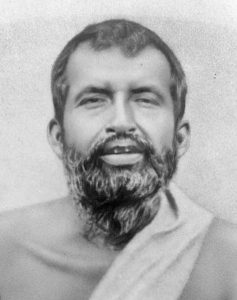
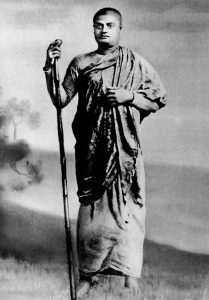
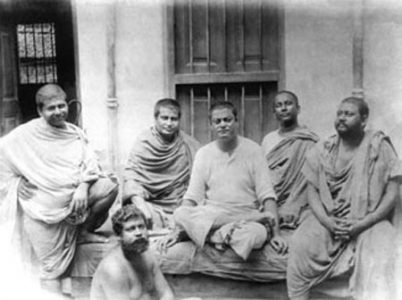
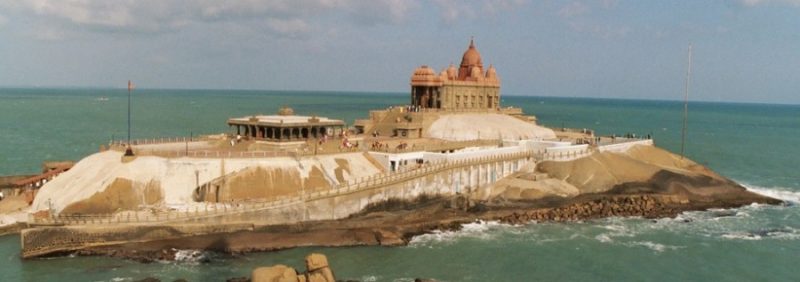
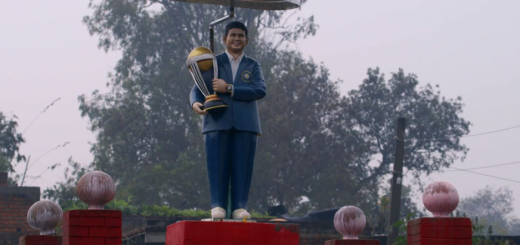
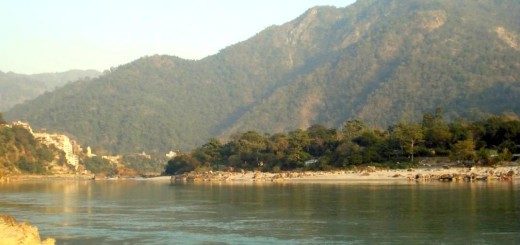
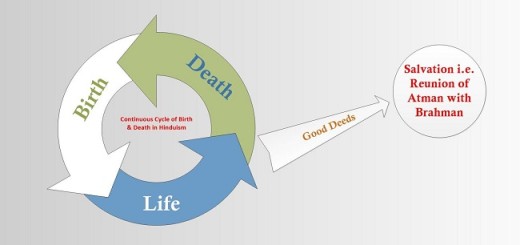

There are two mistakes in mentioning Year when Ramkrishna Paramhansa developed Is stated as1985 which should be 1885 His Dea Death occurred in 1886 ¬ in 1986 Appear to be typographical errors But need correction